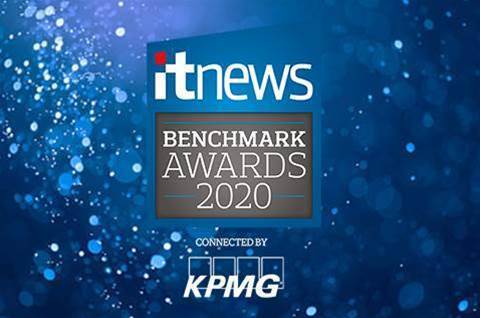Every year the iTnews Benchmark Awards recognise the hard work of federal government agencies to improve productivity and service delivery, and this year is no different.

Over the last 12 months, huge gains have been made on some of the government’s most ambitious IT projects in recent years.
These projects extend beyond the function of government itself, with many attempting to solve whole-of-economy issues through the introduction of critical underpinning IT infrastructure.
It seems fitting then that all three finalists in the running to win this year’s coveted gong for best federal government project fall into this class.
The projects include a rebuild of Australia’s tax agent portal, a digital identity ecosystem that promises to unlock $10 billion in productivity and a massive IT overhaul at the country’s central bank.
All 14 categories in this year’s awards have now been revealed. You can read about the finalists here.
Keep an eye out for the first of our case studies on the finalists in the run up to the awards gala dinner on March 7, where we will announce the winning projects.
iTnews Benchmark Awards 2020 Federal Government Finalists
Australian Taxation Officer: ‘Online services for agents’
Faced with unstable – and equally unpopular – legacy tax and BAS agent portals, the Australian Taxation Office embarked on a massive rebuild to improve usability.
The final product was online services for agents, a cloud-based portal for agents to access ATO systems and client records and communicate with the agency on behalf of clients.
The ATO has gradually rolled out the portal, which has been built in partnership with Accenture, over the past two years, starting with a private beta in December 2017.
It officially became the ATO’s default portal in August 2019, replacing the former tax and BAS agent portals.
Since the portal was introduced, the ATO has been overwhelmed by feedback, particularly from many international revenue agencies, who consider it the new standard to beat.
It has also already resulted in cost-savings and increased efficient for both tax agents and the ATO. The self-service functionality alone is expected to save $5 million each year.
Digital Transformation Agency: ‘Govpass digital identity ecosystem’
In 2015, the government's financial system inquiry led by David Murray found that Australia’s identity environment was immature, and contributed to higher costs and identity crime.
It highlighted that a national federated digital identity, supported by a trusted digital identity framework, should be developed to let citizens easily and securely access digital services.
Tasked with this challenge, the Digital Transformation Agency – and its predecessor, the Digital Transformation Office – has spent the last five years coming up with a solution.
After many iterations, the DTA has settled on solution that uses a ‘double-blind’ to ensure identity providers and service providers can verify identity without revealing an individual’s credentials.
Dubbed Govpass, the solution is served by a DTA-built identity exchange, which is now being operated by Services Australia, and the ATO’s new digital identity credential myGovID.
myGovID, which is a digital identity linked to a user’s iOS and Android device, works like a digital equivalent of the 100 point ID check.
It became available to citizens in June after the core infrastructure was deployed to production.
Further identity accredited digital identity credentials will also be offered by other third-parties in the future, starting with Australia Post.
As at November, more than 80,000 myGovID identities had been created.
Reserve Bank of Australia: ‘Banking technology modernisation’
The Reserve Bank of Australia has become a truly a 24x7 institution thanks to a major overhaul of its core banking system.
The central bank wrapped up the modernisation and decommissioned its legacy mainframe core banking applications in the second half of 2019.
It builds on early work to develop the Fast Settlements Service infrastructure that sits behind the New Payments Platform (NPP) that now underpins Australia’s financial system.
Together with a new cloud-based API gateway, government agencies are able to use the NPP and the new core banking system to trigger calls to initiate payments and banking services in real-time.
The RBA has delivered the program in-house, but had deliberately avoided bespoke software development.
The core banking platform, cloud-based API gateway and NPP were delivered by TCS, HCL, Mulesoft, IBM, BTP Australia and Syntegrity Solutions.


.png&h=140&w=231&c=1&s=0)
_(20).jpg&h=140&w=231&c=1&s=0)





_(26).jpg&w=100&c=1&s=0)

 iTnews Executive Retreat - Security Leaders Edition
iTnews Executive Retreat - Security Leaders Edition











_(1).jpg&h=140&w=231&c=1&s=0)



